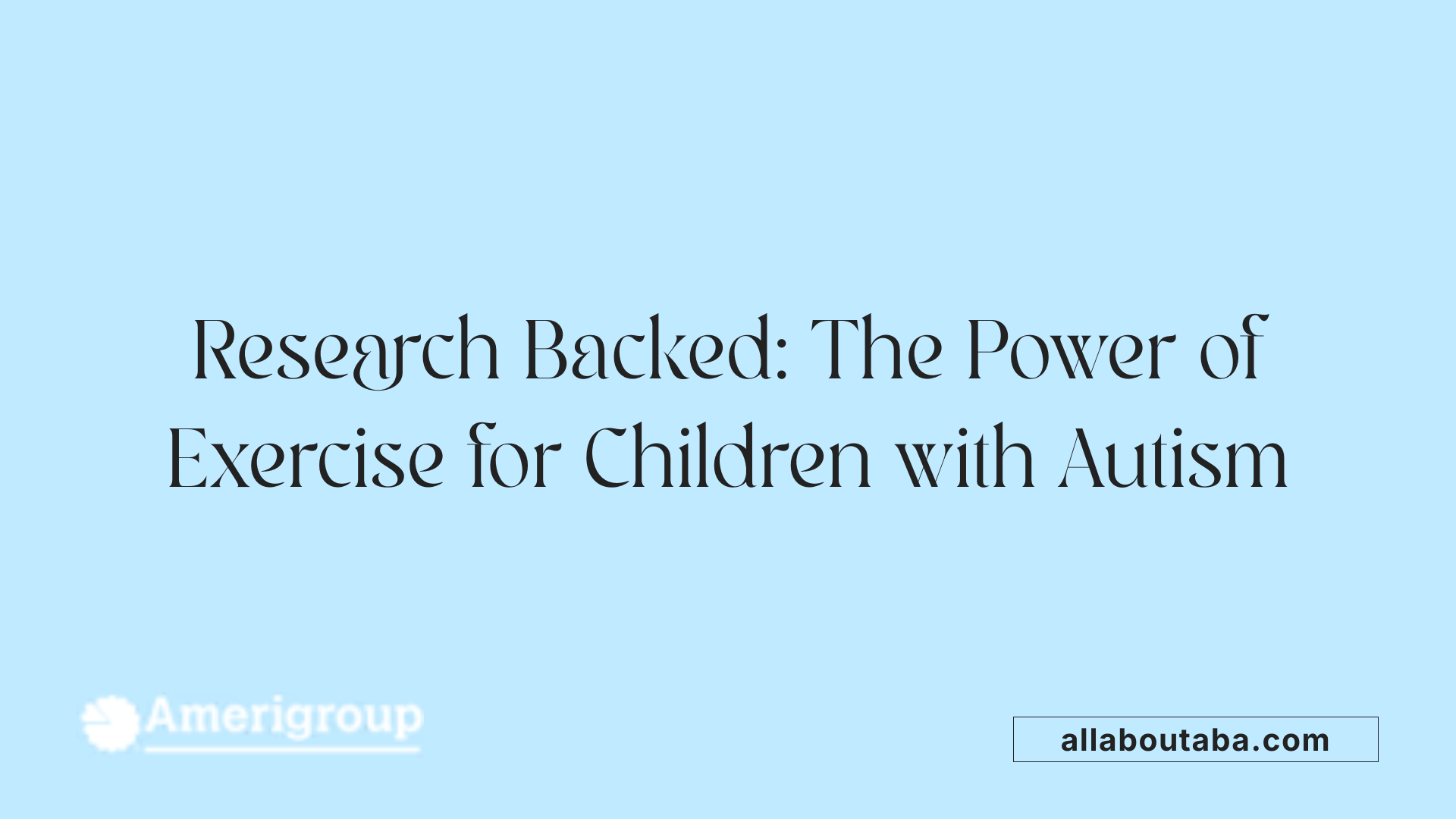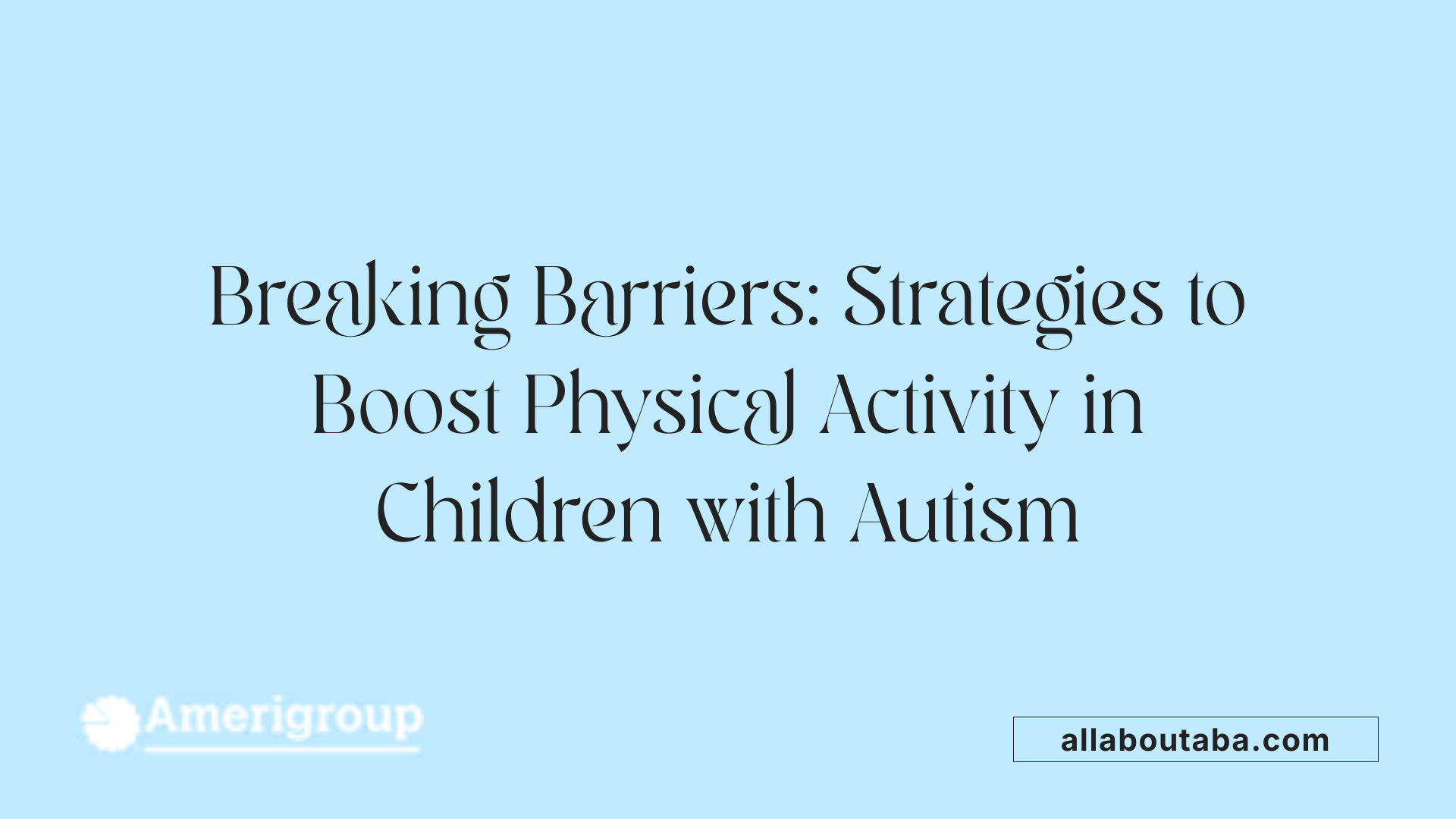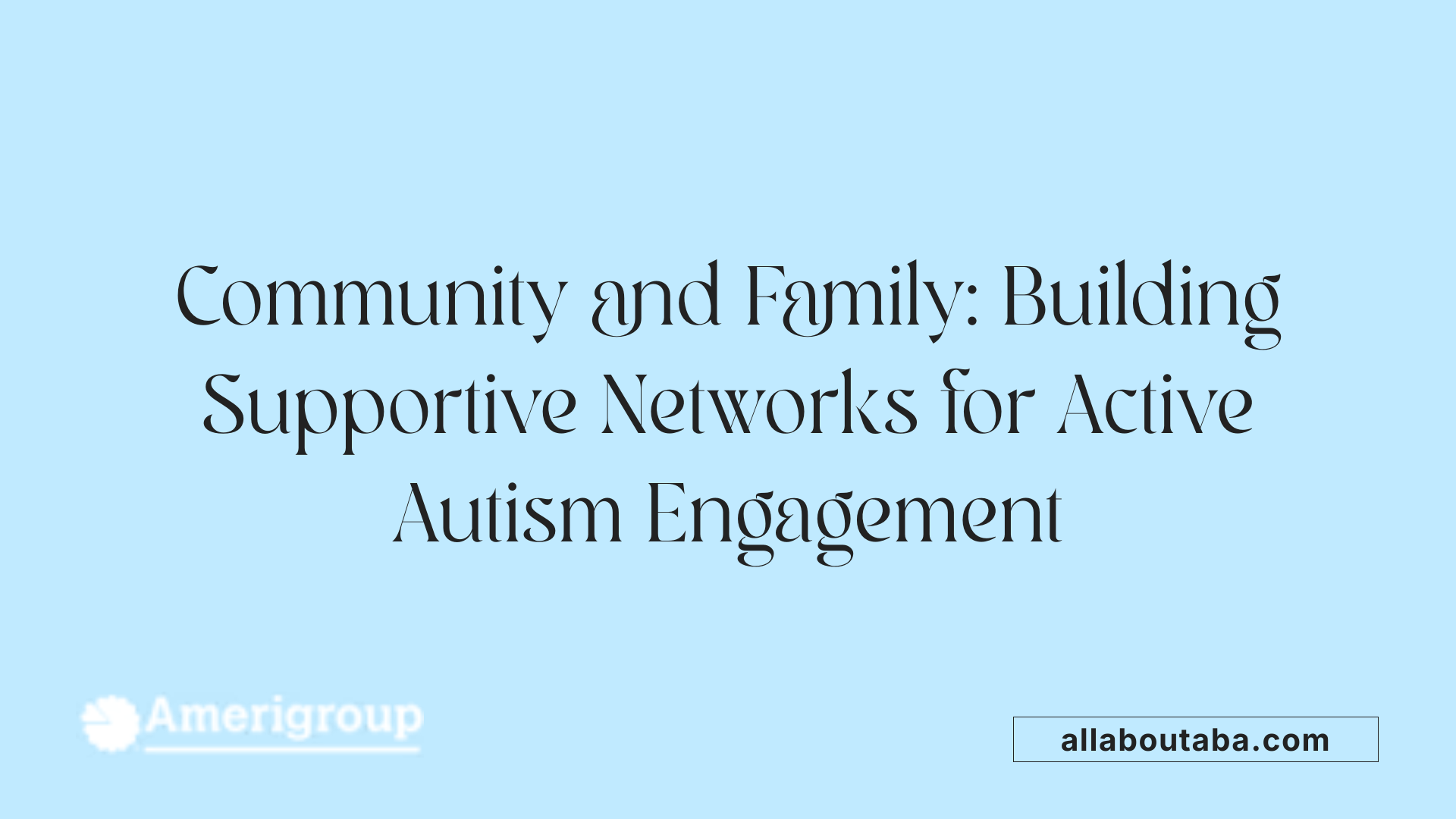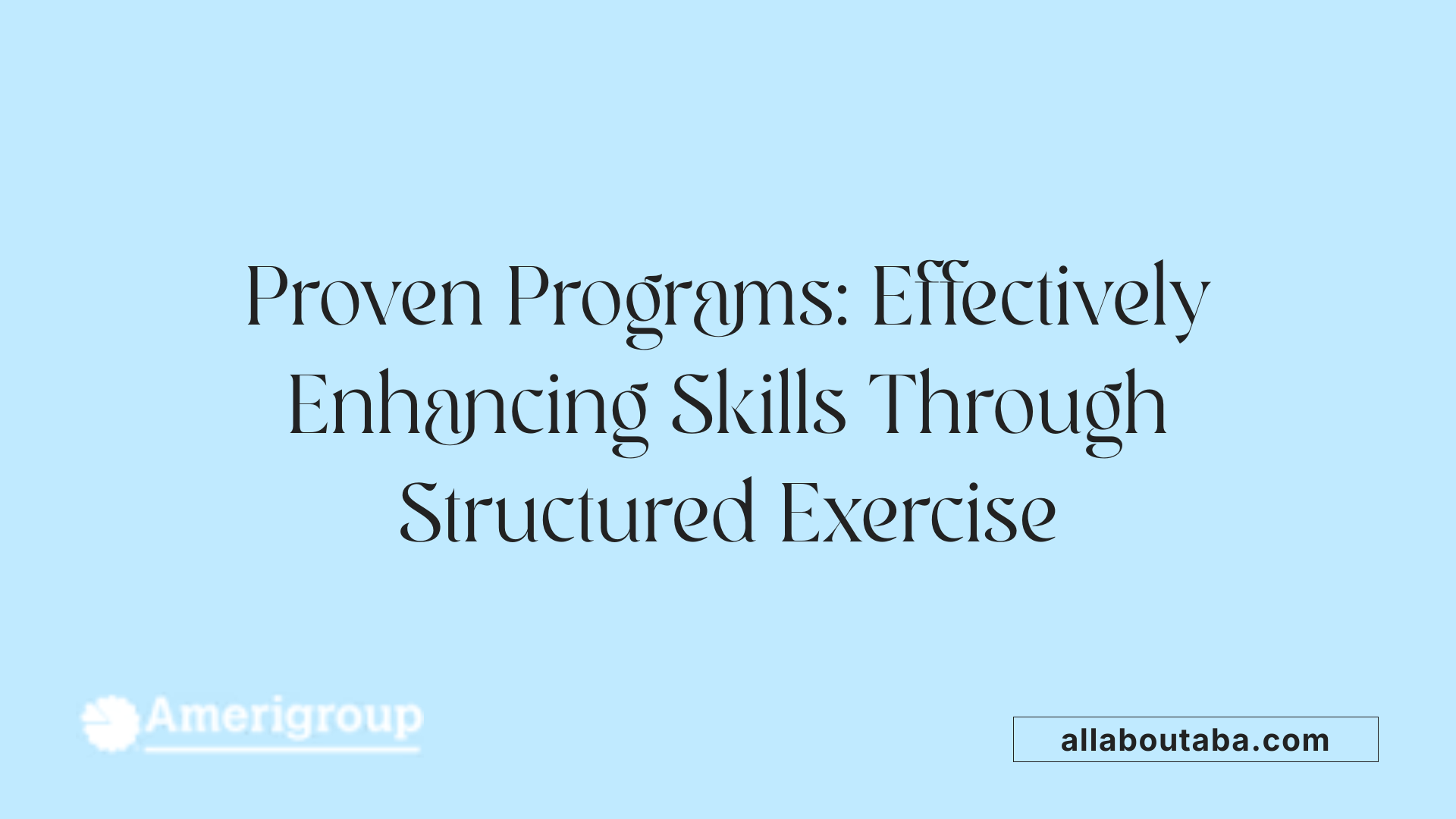The Power of Physical Activity for Children with Autism
Physical activity plays a vital role in supporting the growth, health, and social integration of children with autism spectrum disorder (ASD). While many children on the spectrum face unique challenges, tailored exercise programs can unlock numerous benefits, fostering not only physical fitness but also social skills, communication, and emotional regulation. This comprehensive overview explores the significance of promoting movement, effective strategies for encouragement, suitable activities, scientific evidence, and ways to overcome barriers to active lifestyles.
The Benefits of Physical Activity in Children with Autism
Why is physical activity important for children with autism?
Engaging in physical activity offers numerous advantages for children with autism spectrum disorder (ASD). Regular participation helps improve motor skills such as balance, coordination, and perceptual abilities, which are commonly affected in children with ASD. Activities like running, jumping, and ball games can significantly enhance these fundamental motor skills.
Besides physical development, exercise has positive effects on social functioning. Structured activities like team sports and group exercises foster social interactions, communication, and cooperation. For example, sports such as mini-basketball and karate have been shown to substantially improve social behaviors and reduce social barriers.
Behavioral benefits of physical activity include reduced aggression, stress, and stereotypical behaviors. Exercise releases endorphins, promoting well-being and emotional regulation. Programs like aerobic exercises, martial arts, and exergaming effectively decrease maladaptive behaviors and increase overall mood stability.
Physical health itself benefits greatly from regular activity. Children with ASD tend to have higher rates of overweight and obesity; physical activity helps address these issues by improving cardiovascular fitness, muscle strength, and endurance. It also supports better sleep, mental focus, and self-efficacy.
In summary, physical activity is a vital component in supporting the physical, social, and emotional development of children with autism. Tailored, engaging, and supportive exercises can lead to lasting improvements in their quality of life, helping them reach their full potential.
Physical and Motor Skill Improvements Through Exercise
What types of exercises and programs are suitable for children with autism?
Children with autism benefit from a variety of physical activities that support the development of motor skills, coordination, and strength. Suitable exercises include full-body activities such as jumping on trampolines, swimming, riding bicycles, and running. These activities help improve overall physical health and motor coordination.
Tailored programs designed specifically for children with autism can incorporate exercises like bear crawls, medicine ball slams, and star jumps. These activities enhance coordination, muscular strength, and body awareness. Performing vigorous activities for more than 20 minutes can positively influence behavior, reducing stereotypical actions, hyperactivity, and aggression. Additionally, these exercises promote better mood regulation and coping strategies.
Sensory activities also play a vital role. Using fidget toys, sensory bins, or slime experiments can support sensory regulation and reduce anxiety. Calm-down techniques such as coloring, mindfulness practices, or having a designated retreat zone help children self-regulate.
Core strengthening exercises like planks, bridging, and balance activities are beneficial for posture, stability, and motor skills. These can be integrated into daily routines or therapy sessions.
Furthermore, structured social activities that incorporate visual supports and clear instructions foster social understanding and interaction. Activities like team sports or group exercises, combined with visual aids, make programs more inclusive and tailored to individual needs.
Overall, engaging children in fun, safe, and developmentally appropriate movement-based exercises can significantly enhance their physical capabilities, social skills, and emotional wellbeing, promoting a more active and healthy lifestyle.
Scientific Evidence Supporting Exercise Benefits
 Numerous research studies have examined how physical activity benefits children with autism, revealing positive impacts across various development domains.
Numerous research studies have examined how physical activity benefits children with autism, revealing positive impacts across various development domains.
One comprehensive review of research studies highlights that exercise significantly improves motor skills, cognitive functions, and social skills in children with autism. This review, which synthesized data from 37 individual studies—nine of which contributed to a quantitative meta-analysis—found notable benefits that included better coordination, balance, and muscle strength.
Meta-analyses and systematic reviews further support these findings. A high-quality meta-analysis involving randomized controlled trials demonstrated that exercise interventions—such as aerobic activities, aquatic therapy, martial arts, and mind-body exercises—lead to improvements in social interactions and reductions in behavioral problems.
The effect size from these studies ranged from moderate to substantial, with a standardized mean difference (SMD) of approximately -0.53 and a statistical significance of P=0.000. These results emphasize the consistency and robustness of evidence pointing to physical activity as a beneficial approach.
Specific activities like swimming, karate, minibasketball, and group sports have shown particular promise in enhancing social communication skills and reducing stereotyped or aggressive behaviors. For example, karate training has been linked to decreased communication difficulties and increased neurogenesis, promoting better memory and learning.
The reliable findings across multiple high-quality studies suggest that implementing regular, structured physical activity programs can markedly improve key developmental outcomes in children with autism. These benefits include enhanced motor coordination, social behavior, and overall mental wellbeing.
| Study Type | Sample Size | Main Focus | Findings | Effect Size/Significance |
|---|---|---|---|---|
| Systematic Review | 37 studies | Benefits of physical activity | Significant improvements in motor, social, and behavioral skills | SMD=-0.53, P=0.000 |
| Meta-Analysis | 9 studies | Exercise impact | Reduced stereotyped behaviors, enhanced social function | Moderate to substantial |
Overall, consistent scientific research underscores that physical activity is a vital, effective intervention supporting the health and development of children with autism, with benefits enduring over time and across multiple behavioral and physical domains.
Overcoming Barriers and Challenges in Promoting Activity

What are common challenges and barriers to promoting physical activity among children with autism, and how can they be addressed?
Children with autism often face several obstacles when it comes to engaging in physical activity. These barriers can significantly limit their participation in sports, exercise, and outdoor play. Understanding these challenges is the first step toward creating effective strategies to promote active lifestyles.
One of the primary challenges is sensory sensitivities. Many children with autism experience heightened sensitivities to stimuli such as loud noises, bright lights, or certain textures. These sensitivities can make typical physical environments overwhelming or uncomfortable, discouraging participation. To address this, sensory-friendly environments that minimize or modify stimuli can help children feel more comfortable and willing to engage.
Motor skill deficits are another common barrier. Difficulties with coordination, balance, and perceptual skills can make activities like running, jumping, or ball skills challenging. Tailored interventions that focus on developing fundamental motor skills through play and structured exercises are vital. Using adaptive equipment and breaking down skills into manageable steps can also facilitate improvement.
Behavioral difficulties, such as the tendency toward stereotyped behaviors, hyperactivity, or aggression, can interfere with the ability to participate consistently in physical activities. Positive behavior support strategies, clear routines, and reinforcement techniques can help manage these behaviors, encouraging ongoing engagement.
Social exclusion and lack of peer support further hinder participation. Children with autism may face social rejection, bullying, or difficulty understanding social rules in group settings. Inclusive programs that promote peer involvement, social stories, and buddy systems can foster a sense of belonging and improve social skills.
Environmental obstacles like the lack of accessible facilities, trained professionals, or adaptive equipment often limit options for physical activity. Improving infrastructure—such as creating inclusive parks, gyms, and community centers—paired with professional training for coaches and educators in autism-friendly practices, can make activities more accessible.
Family and societal barriers also play a significant role. High costs of programs, limited awareness, and societal attitudes toward autism can reduce opportunities for active engagement. Community outreach, parent education programs, and subsidized services can help overcome these issues.
In summary, addressing the multifaceted barriers faced by children with autism requires a combination of tailored environment modifications, skill development, social inclusion initiatives, infrastructure improvements, and community support. Creating supportive, accessible, and engaging physical activity opportunities not only promotes health and fitness but also enhances social skills and overall well-being for children on the spectrum.
The Role of Exercise in Enhancing Social and Communication Skills
How does physical activity support social skills, communication, and overall development in children with autism?
Physical activity plays a vital role in promoting social and communication skills among children with autism. Structured group activities such as team sports, martial arts, and dance facilitate social interaction by creating opportunities for children to engage with peers, share experiences, and learn social norms.
Involving children in activities like group play or partner-based exercises encourages imitation, turn-taking, and shared attention, which are foundational for communication development. These experiences help children observe social cues, respond appropriately, and build emotional regulation skills.
Research highlights that early intervention with physical activity—especially programs lasting multiple weeks and conducted regularly—leads to significant gains. For example, horseback riding, martial arts like karate, and small group exercises have shown to improve social motivation and understanding.
The benefits extend beyond social skills; physical activity enhances motor abilities such as balance, strength, and coordination, further supporting participation in social settings. As children develop these physical and social competencies, their confidence and willingness to interact increase.
Studies underscore that physical activity, especially when delivered in a structured and supportive environment, serves as an effective addition to traditional therapies. It fosters social engagement, communication, and overall behavioral improvements, contributing to better quality of life for children with autism.
| Approach | Example Activities | Impact | Notes |
|---|---|---|---|
| Structured group activities | Team sports, dance classes, group martial arts | Enhances social skills, coordination | Needs tailored programming and facilitator support |
| Peer engagement | Playdates, buddy programs | Promotes social understanding | Requires family and community involvement |
| Early intervention | Martial arts, horseback riding, group play | Improves social cognition and motivation | Longer duration programs yield better outcomes |
| Motor and social skills development | Balance exercises, strength training combined with social tasks | Boosts confidence and participation | Must be adapted for sensory sensitivities |
Overall, fostering active participation and creating inclusive, supportive environments maximize the developmental benefits of physical activity for children with autism.
Incorporating Family and Community in Physical Activity

What strategies can families and communities employ to promote physical activity in children with autism?
Involving families and communities plays a vital role in encouraging children with autism to participate in physical activity. Parents and caregivers are encouraged to actively participate in their child's physical activities, serving as role models and boosting motivation. Developing regular routines that incorporate physical exercise helps establish consistency and comfort.
Creating supportive environments is essential. These spaces should address sensory sensitivities and developmental needs, minimizing overwhelming stimuli and providing a safe setting for movement. Using visual supports and social stories can help children understand and anticipate activities, reducing anxiety and promoting engagement.
Community programs such as adaptive sports leagues, sensory gyms, and peer-buddy activities offer inclusive opportunities for children to move, socialize, and develop motor skills. These programs are designed to cater to various ability levels and sensory preferences, making physical activity accessible and enjoyable.
Training families on how to adapt activities is also beneficial. Equipping caregivers with strategies to modify exercises, incorporate positive reinforcement, and use visual supports enhances participation and enjoyment.
Building partnerships with local schools and organizations can expand access to inclusive, structured programs. These collaborations promote a community-wide culture that values physical activity, fostering an environment where children with autism can thrive.
Overall, engaging families and communities is crucial for instilling lifelong healthy habits. By creating supportive, inclusive, and engaging environments, children with autism can experience the physical, social, and emotional benefits of an active lifestyle, leading to improved well-being and development.
Structured Interventions and Programs with Proven Effectiveness

What structured exercise programs have shown effectiveness for children with autism?
Research has identified multiple physical activity interventions that can significantly benefit children with autism spectrum disorder (ASD). One promising approach involves a 12-week program of group sports activities. During this period, children demonstrated notable improvements in their overall physical activity levels, alongside enhanced social interaction skills and a reduction in feelings of loneliness. These structured group activities fostered peer engagement and encouraged collaborative participation in rule-based games, which are vital for social skill development.
Exercise therapy models like physical exercise therapy (PET) have also proven effective. PET aims to reduce core autistic symptoms, such as stereotyped behaviors and social dysfunction, while simultaneously enhancing motor skills and general social abilities. A comprehensive meta-analysis of 28 randomized controlled trials (RCTs), involving over 1,000 participants, confirmed that PET leads to significant improvements across various domains. These include motor performance (with a large effect size), reduction of restricted repetitive behaviors, and better social functioning. Such programs generally involve aerobic exercises, martial arts, and motor skills training, customized to individual needs.
In addition to PET, specific sports like Karate, minibasketball, and exercises like SPARK have shown high efficacy in promoting social skills and increasing participation in physical activity. Karate, in particular, topped the effectiveness scale, with a high effect size indicating substantial benefits in social functioning. These activities can be seamlessly integrated into school curriculums, community recreation programs, or therapy sessions to reach children with diverse needs.
These evidence-based interventions are characterized by their safety, adaptability, and positive impact on physical and social development in children with ASD. They promote not just motor and physical health but also foster social engagement, communication, and emotional regulation. Developing programs that are tailored, engaging, and accessible ensures children on the spectrum can fully benefit from these therapeutic and developmental opportunities.
| Program Type | Duration & Structure | Main Benefits | Adaptability & Settings |
|---|---|---|---|
| Group sports activities | 12-week structured group participation | Increased physical activity, reduced loneliness, improved social interaction | Schools, community centers, clinics |
| Exercise therapy models (PET) | Duration varies, typically several weeks | Improved motor skills, reduced stereotyped behaviors, enhanced social functioning | Clinician-led sessions, home programs |
| Martial arts & sports (Karate, minibasketball) | Ongoing classes, standard curriculum | Enhanced social skills, better coordination, increased self-efficacy | School, community, specialized therapeutic settings |
| Evidence-based programs (SPARK) | Program-specific, research-validated | Increased physical activity, social engagement, behavioral improvements | Schools, recreational programs, therapy groups |
Fostering a supportive, tailored, and engaging environment for children with autism through these programs can lead to meaningful improvements in their physical, social, and emotional well-being, laying a foundation for a healthier and more connected life.
Long-Term and Inclusive Physical Activity Strategies for Autism
How can physical activity strategies support children with autism throughout their lives?
Supporting children with autism in maintaining an active lifestyle from childhood into adulthood is crucial for their overall health, social engagement, and quality of life. Physical activity strategies that are adaptable, engaging, and inclusive can promote lifelong participation.
One effective approach is to develop programs that evolve with the individual’s developmental needs. As children grow, their interests and abilities change, so activities should be tailored accordingly. For example, early childhood options like play-based activities can transition into more structured sports or fitness routines for teens and adults.
Inclusive programs are essential in accommodating diverse sensory and motor needs. Adaptive sports leagues, sensory gyms, and peer-buddy systems create supportive environments where individuals can participate comfortably and confidently. Schools and community centers play a vital role by offering accessible activities like yoga, swimming, walking groups, or dance classes, adapted for sensory sensitivities and motor skill levels.
Tailoring activities to individual preferences and capabilities boosts motivation and ensures sustained engagement. Using visual supports, social stories, and positive reinforcement can help individuals navigate new routines and overcome participation barriers.
Parents, educators, and caregivers should collaborate to build ongoing, supportive networks. Providing education about the importance of physical activity and strategies for adaptation encourages families to integrate movement into daily routines. Regular reinforcement of these activities and gradual goal-setting help maintain interest and participation over time.
Establishing a culture where active living is valued and normalized promotes physical health, emotional stability, and social connectedness. Incorporating diverse activities and encouraging community involvement can help children and adults with autism enjoy the benefits of physical activity throughout their lives, supporting their growth and well-being at every stage.
Future Directions and Research in Autism and Physical Activity

How can physical activity programs be tailored for children with autism?
To optimize benefits, physical activity programs need to be adapted to each child's unique sensory, motor, and behavioral profile. Techniques such as using visual supports, creating predictable routines, and incorporating sensory-friendly environments make activities more accessible.
Involving families and trained facilitators who understand autism ensures activities are engaging and safe. Activities like yoga, adaptive sports, and interactive movement tools can be modified to suit individual sensitivities and motor abilities.
How can the most effective activities for children with autism be identified?
Research suggests that certain sports and exercises, including karate, minibasketball, swimming, and horse riding, have significant positive impacts on social skills, communication, and motor development. Randomized controlled trials and systematic reviews help compare these activities' benefits.
Combining multiple approaches, like sports with music therapy or social skills training, shows promising results. Using tools like the SURCA framework helps rank activities based on their impact, guiding program development.
What long-term benefits can sustained physical activity produce?
Long-term engagement in physical activities is linked to durable improvements in social functioning, motor skills, behavioral regulation, and overall health. Regular participation can reduce stereotypical behaviors, improve emotional control, and foster independence.
Sustained activity routines contribute to better sleep, increased physical fitness, and enhanced mental wellbeing, including reduced anxiety and hyperactivity. These benefits extend well beyond childhood, supporting lifelong health and social integration.
What areas of future research could further improve physical activity interventions?
Future studies should focus on customizing programs based on individual sensory sensitivities, motor skills, and behavioral needs. Long-term investigations are necessary to determine which activities yield lasting benefits and how often they should be performed.
Emerging technologies, such as virtual reality, interactive apps, and wearable sensors, offer new ways to engage children and track progress. Exploring how exercise influences biological factors, including brain structure, neuroplasticity, and gut microbiota, can lead to more targeted and effective interventions.
Advancing our understanding of neural and physiological mechanisms will enable the development of personalized therapies that maximize health, social, and behavioral gains. Overall, future research aims to create accessible, tailored, and evidence-based physical activity programs that improve quality of life for those with autism.
Harnessing Movement for Better Outcomes
Ultimately, promoting physical activity in children with autism is a multifaceted effort that yields profound benefits across physical, social, and emotional domains. Evidence-based strategies, inclusive programs, and family and community involvement are critical to overcoming barriers and supporting children’s lifelong health and development. Continued research and innovation will refine these approaches, ensuring that every child on the spectrum has the opportunity to thrive through movement.
References
- Autism and exercise: Special benefits
- Promoting physical activity for children with autism spectrum ...
- Positive effects of physical activity in autism spectrum disorder
- Benefits of Exercise For Children With Autism | Foundations
- 7 Fun Exercises for Kids with Autism - Active Ability
- Effects of group sports activities on physical activity and social ...
- The effect of physical exercise therapy on autism spectrum disorder ...







